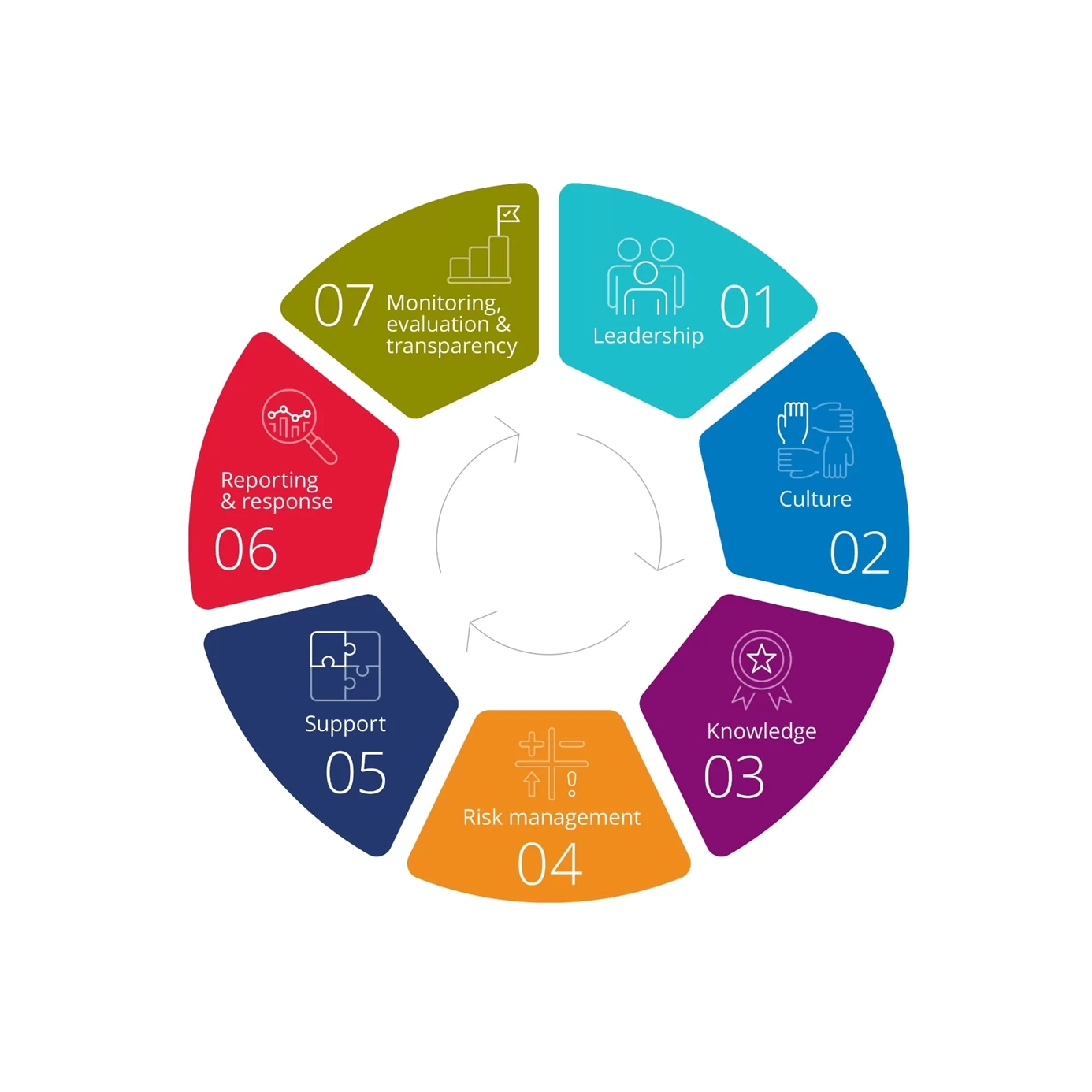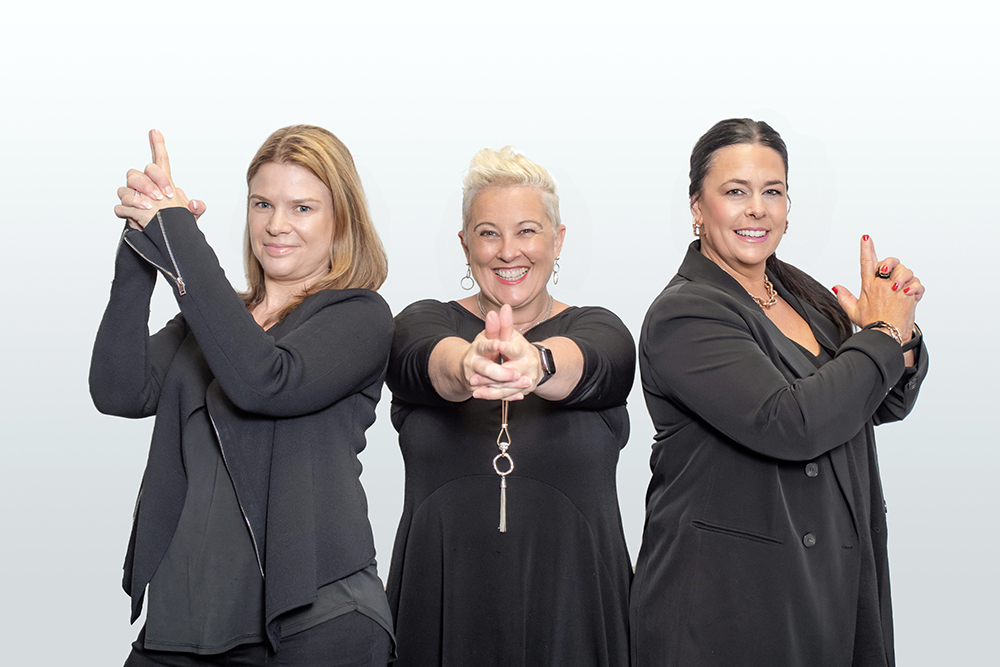We need to talk about positive duty and how it relates to sexual discrimination and harassment in the workplace. It is one of those subjects that we all would prefer not to think about. It is a little overwhelming and we all tend to pop it in the too hard basket but overwhelming or not, it is absolutely imperative that you, as a business leader, are fully across what it means and what you need to do to ensure you are complying with the new federal legislation. Our aim is to make this easy to digest so you can get yourself on the right track if you aren’t already.
Positive duty
First up, positive duty is an element of the changes that were introduced in the Sex Discrimination Act back in December 2022. Prior to this, we were all expected not to discriminate based on gender or allow sexual harassment to occur in the workplace and the Act was focused on taking appropriate action in the event these did occur. Most businesses implemented policies advising employees that discrimination or sexual harassment were unlawful, and acted accordingly if something occurred or a complaint was made.
The Act has been updated and now imposes a legal obligation on businesses and their leaders to be out on the front foot and have in place plans and actions that prevent workplace sexual harassment and sex discrimination as opposed to responding only after it has occurred.
Importantly, the Act requires there to be a relevant and specific, customised approach to how each business will do this, based on it’s own workforce and risks. To be clear – there is now a much more stringent requirement and all businesses have a legal obligation to ‘Positive Duty’ which is far more onerous than having a policy or reacting to an event.
Relevant unlawful conduct
Before we get any further into your positive duty obligations, lets be clear about what relevant unlawful conduct the Act is specifically covering off:
- discrimination on the grounds of sex in a work context
- sexual harassment in connection with work
- sex-based harassment in connection with work
- conduct creating a workplace environment that is hostile on the grounds of sex
- related acts of victimisation
Australian Human Rights Commission (AHRC)
We also need to highlight additional powers that have been accorded to the Australian Human Rights Commission (AHRC) under the new legislation that came into effect as of 12th December 2023. If a complaint is made, the AHRC will look at whether you were reasonable or proportionate in your planning. That means they will look at your resources such as financials or the ability to utilise a Human Resources team or consultant to support the process, as well as the practicability and the cost measures of your planning. Inserted in the legislation is that good old catch all of “any other relevant matter” that allows the AHRC to include anything else they deem appropriate to include in their investigations.
The AHRC new powers cover both investigations and enforcing compliance with the positive duty responsibilities. We won’t go into detail here, but suffice to say, your best option is to have your ducks in a row as a knock on the door from the AHRC will likely not be a fun visit and any direction they give, to which you must adhere, may be onerous and impose challenges to your business. Your best bet is to get it right in the first instance and then you won’t have to worry!
Reasonable and proportionate
To clarify, consideration will be given to whether or not your positive duty planning is reasonable and proportionate. For example, a large multinational business with hundreds of employees is going to need to deliver a more robust plan than the local milk bar that employs two people who work alongside the owner. That doesn’t mean the local milk bar gets off Scot free – every business in Australia must satisfy positive duty.
What it does mean though is that the large multinational should be able to show an investment in a thorough audit of current practices, policies, training and so forth and address any risks that are uncovered with a robust and appropriate plan. This is not as simple as upping the number of training sessions they run as it may include things such looking at shared spaces in an office block (think of shared facilities such as bathrooms, gyms etc), considering how late shift employees get to their cars or home safely or managing ingrained behaviors. The ultimate aim is to eliminate or prevent unlawful sex discrimination or harassment as far as is possible in the context of employment.
While a small or medium sized business doesn’t have the same level of requirement, it still exists and is a legal obligation. Most importantly, the Act is not just about employee to employee based actions; it is a requirement that businesses assess all risks to employees from other contacts such as customers, suppliers and contractors, and actively seek to minimize the risk and have a response plan at the ready in the event something does occur.
Guiding principles
There are 4 guiding principles to positive duty.
- Consultation – while it is appropriate for you or your designated leaders to conduct initial work such as an audit or a first draft of your plan, it is best practice to ultimately engage in consultation with your employees before finalising. They are likely to have a different experience or observations and may be able to highlight risks not yet considered. Consultation will also assist in engagement when you go live with your plan. Critically, the expectation is that your plan is a live document that is constantly reviewed and updated; meaning ongoing consultation or feedback mechanisms need to be considered.
- Gender equality – equality, or at the very least, striving for equality is acknowledged as a key element in supporting the reduction of sexual harassment incidents. Look to implement measures that advance gender equality so that everyone has the same rights, rewards and opportunities.
- Intersectionality – this principle addresses the need to understand that there are many different types of people within the workplace. You will need to consider factors that intensify their experience of discrimination or harassment such as, but not limited to, gender, gender identification, sexual orientation, culture (e.g indigenous), race and age.
- Person centred and trauma informed – consider the person individually and be aware of any trauma they may have previously experienced and how this may impact responses or recall to an incident so that you can aim to avoid further harm.
The 7 Standards for compliance
There are seven standards that form a framework to help you develop and implement practical actions to eliminate relevant unlawful conduct and to delivery on your positive duty obligations. To be clear, every business needs to have a Positive Duty plan which includes assessment of risks, actions you are taking, and details your response plan.
1. Leadership
- Senior leaders are responsible for ensuring that reasonable and proportionate measures are developed, recorded in writing, communicated to all employees and implemented.
- This is a top down principle in that all leaders should be seen to be actively engaged and committed to ensuring your business takes their positive duty plans seriously.
- If you have a Board, positive duty should be an agenda item in the same way OH&S is (or should be!) That means, every meeting….
- It’s important to note that leaders can be individually held liable for any shortcomings in positive duty, alongside the business.
2. Culture
- Pay particular attention to gender balance and diversity in recruitment. Don’t overlook the meritocracy but consider equality and how you can bring it into your business in a practical sense.
- Encourage all employees to be advocates for a culture that fosters equality and does not tolerate harassment. Empower your people to stamp out unacceptable (and unlawful) behaviour before it has a chance to become normalised. Help them feel safe in calling out entrenched behaviours that are no longer welcome – empowering ‘bystander interference’ is powerful and appropriate.
- Consider participating in industry-specific gender equality, diversity and inclusion initiatives or consult with local working groups.
3. Knowledge
- Check your policy. Is it tailored to your business and does it encompass enough information regarding respectful behaviour and unlawful conduct?
- Review your training. Has it been updated and is it ongoing? Is it trauma informed?
- Communicate with your employees regularly around what is acceptable. Emails, toolbox meetings, company updates – all are opportunities to remind and inform employees of their obligations and the support available.
4. Risk management
- Ensure senior leaders are actively involved in and responsible for the risk management process.
- Capture everything in writing so there is always a paper trail should you need it.
- Regularly assess your plans for ongoing effectiveness.
5. Support
- You must have appropriate support, and coaching, in place for those who experience or witness relevant unlawful conduct.
- Ask the reporting employee what support they need or would like.
- Establish internal and external support options. Internal options may drive the need for additional training that allows for a Mental Health First Aid Plan. External options may include an Employee Assistance Program (EAP).
6. Reporting and response
- You must have appropriate methods for reporting and response that all stakeholders understand and can access.
- Your response and any consequences must be applied consistently and in a timely manner. You must be seen to be dealing with matters equally irrespective of gender or position within the business.
- The priority is always to uphold safety and wellbeing.
7. Monitoring, evaluation and transparency
- Collect relevant data and information to understand the nature and/or presence of unlawful conduct in your workplace.
- Use any collected data to assess and improve your measures and their effectiveness for eliminating sex discrimination and harassment.
- Share relevant data with senior leaders to ensure effective governance.
- Be transparent about the nature and extent of reported behavior and steps taken to address it.
One bite at a time
Positive duty does apply significant obligations on businesses and leaders and it is not something that can be popped on the backburner in the hope it will go away. It also can’t be left in the hands of your HR Manager, Payroll person or even your external HR Consultant. Each business, and every leader in it, needs to understand the responsibility and be active in preparing, planning, responding and leading.
However, don’t be overwhelmed. It all comes back to the age old question of ‘how do you eat an elephant?’ One bite at a time. And so it is the same with putting your positive duty plans in play. Break it down to assessment, consultation, implementation and then ongoing review, training and communication.
If you are still finding this overwhelming and require support in establishing a process to make sure you are compliant with positive duty, call HR Staff n’ Stuff for a chat about your individual business needs!







